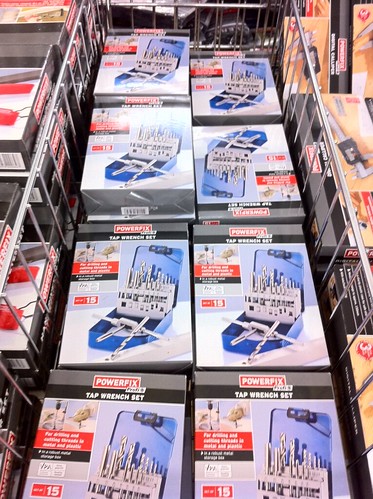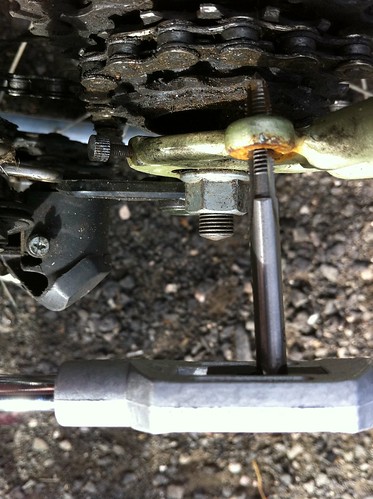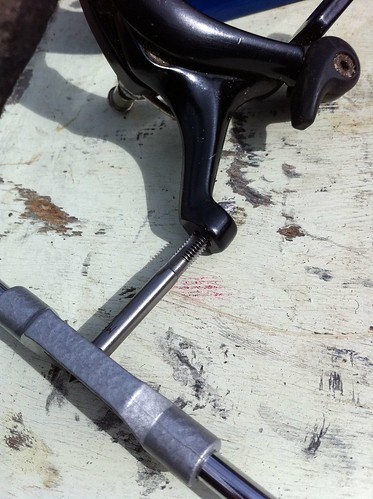I have a tap and die set. I'm quite pleased actually because my lost M5 tap turned up today. My tapping wrench though was one of the cheap collet chuck designs and died a while ago, but my 5" adjustable spanner works better in some cases.
I imagine that for creating chainring shift pins you'd want M3, possibly M4, since the machine screw heads will need to be quite small. I'm not sure if I still have my M3 tap or not. The process for tapping a thread in metal is quite straightforward but precise and relies heavily on feeling the tap biting and tightening. I've broken off too many taps in blind holes to be slapdash about it! But in a chainring you have only a small thickness of material to work with, so that risk is pretty small. You also need to have the right size of drill to create the pilot hole. In aluminium, and in a thin section, you can fudge it a wee bit more. M3 will take a 2.5mm bit; M4 will use 3.2mm (Edit: strictly speaking it's 3.3mm, but you never see that size in DIY multisets).
The rule of thumb for hand tapping, once the tap is engaged, is half a turn of cutting, then a quarter turn of reverse to clear swarf, repeat, rinse as required, and use cutting paste. In a pinch you can use lithium or moly grease, and if cutting into nylon or glass-filled nylon, you often don't need any lubricant. On a lathe or machining centre you can constantly douse the workpiece with cutting fluid and just keep on turning.
Given the small thickness and resultingly few turns of thread (M3 pitch is 0.5mm, remember), you might also want a dash of threadlocking compound to ensure it doesn't back itself out. Loctite 243 usually covers most bases.

 resolved
resolved


 posts
posts
